The Real Market with Chris Rising – Ep. 85 Matt and Mike Pestronk
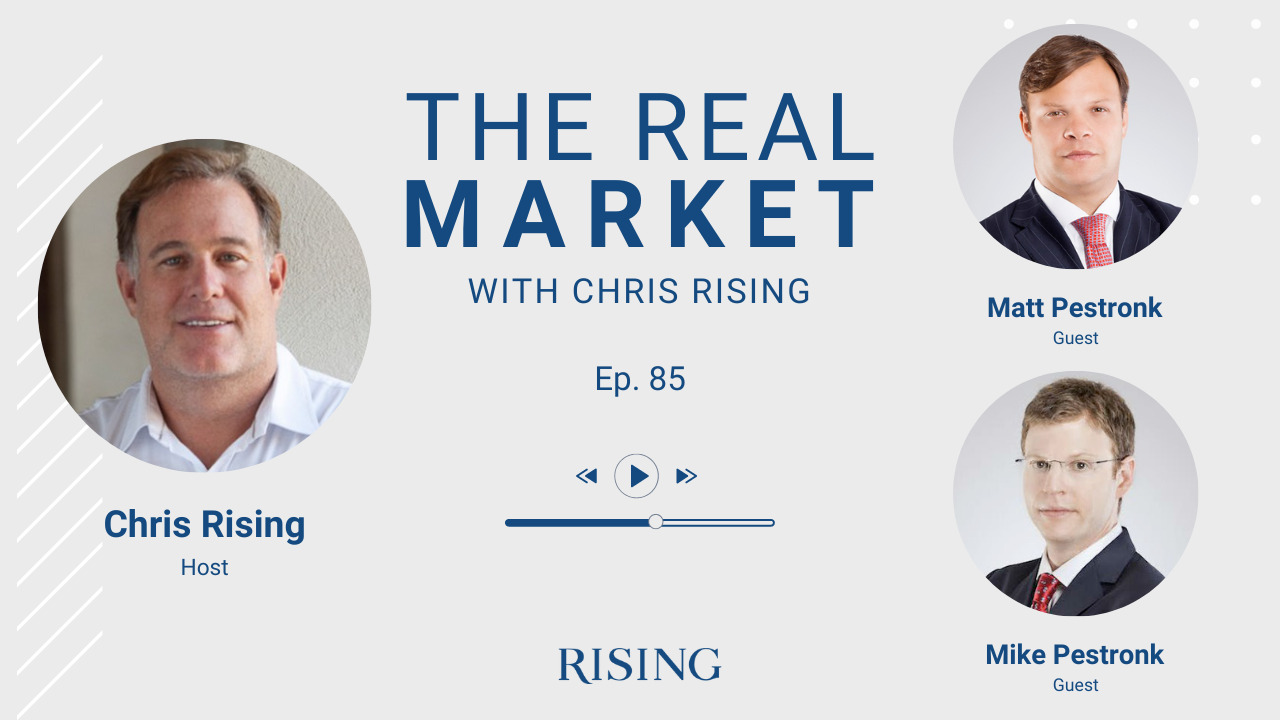
The Real Market with Chris Rising – Ep. 85 Matt and Mike Pestronk
Podcast: Play in new window | Download
(00:00:51):
Welcome to The Real Market with Chris Rising. I’m excited today to have a couple of guys who started a company in 2006 and this thing has grown and they’re not just a couple of friends, they’re brothers. So, I’m excited to have Matt and Mike Pestronk from Post Brothers out of the Philly area, but really on the Eastern seaboard, joining The Real Market. So gentlemen, welcome.
Matt Pestronk (00:01:13):
Thanks for having us, Chris.
Mike Pestronk (00:01:14):
Thank you. Thanks for having us.
Chris Rising (00:01:15):
Well, as I mentioned before we started, I don’t think I’ve interviewed two people at once, much less two brothers at once. So, I’m going to leave it up to you guys who decides to fight over who gets to answer most of the questions. But why don’t, Matt, just since you’re the older brother, why don’t you give us a little bit about Post Brothers and about what led you to it, and then we’ll have your brother Mike talk.
Matt Pestronk (00:01:38):
Sure. So, Post Brothers was started by my brother and I in 2006 with the idea of buying and renovating apartment buildings that were older in infill locations, in Philadelphia, which was a novel business plan at the time, now it sounds very prosaic. So, the business is morphed over time from doing that, to doing major adaptive reuse and large scale ground up projects at any given time. We’ve got probably a couple of thousand units under construction, the same in pre-development and a couple of thousand units stabilized, one to 2 billion in each area, at any time.
(00:02:18):
And what led us to doing it was we already got jobs in real estate out of college and then it became something interesting, and we were both working for other people doing things. I was a commercial mortgage broker, and my brother was doing asset management and development for another developer in Philadelphia, and we had an idea that we wanted to start the business, maybe over 20 years, wait, like 25 years ago. But it took some time to get to the point to actually get it started successfully, to be able to stay in business. So, that was what we’ve started, what is now Post Brothers in 2006.
Chris Rising (00:03:01):
So, Mike, when Matt came to you, he’s been doing this mortgage brokerage business. He knows very well things like guarantees and all that stuff. And what made you go from saying, “Yeah, I like working for somebody being an asset manager.” To saying, “No, I’m going to go in and be a principal with my brother.” I mean, that’s got to be a little bit daunting.
Mike Pestronk (00:03:21):
Sure. Well, I think we’re just probably, somewhat naturally, inclined to just be entrepreneurial, but I had been working for a multifamily developer who was doing relatively small scale student housing in emerging neighborhoods. So, the job I was doing, I got exposed to a lot, I worked closely with the principals and I would do things like help loose apartments and oversee renovations, but also cold call widows and ask to buy the building, and ask them to hold paper also, when buying the building. And they gave me a script and I was like 21, but I came to understand.
(00:04:06):
And so, I worked there for a while and it was a great experience and it worked. So, I’ve been doing that, and Matt had been doing commercial lease brokerage and then through that I had been exposed to investment sales and we both came to understand the business of, “Hey, you know how it works, buy a piece of real estate, you can borrow some money, you can raise some money, and you say what you’re doing and you have this idea and hopefully and it should work out.” Yeah, so after a couple of years of experience each, we actually tried after we were both in the business for maybe only year or two as Matt alluded to, that didn’t really take off. Then we both went to work for others, I went to work for two other developers after that. Matt got into commercial mortgage brokerage and then several years later is when we reformed and got off the ground.
Chris Rising (00:05:05):
Matt, why on earth in 2006? I remember it very well, if you’re a mortgage broker, you’re making pretty good money back then. They weren’t asking for a whole lot, it was very covenant light. Was that the why you decided with your first deal, it was a good time, because it was just liquidity in the lending market, or did you find a deal? What did you guys do?
Matt Pestronk (00:05:32):
So the source of liquidity, the first source of asset liquidity for pursuit capital that we were able to generate, was from the investment Mike had made, small pieces of promoted interest Mike made for himself on those projects, plus the money I was making as a mortgage broker, which was, I thought the good times were going to go on forever, but we were focused. I was financing, what I would say, would be mid-market properties, compared to what we’re doing today, but $30 or $40,000,000 shopping centers or suburban office parks. And we weren’t trying to buy properties like that, we were trying to buy $2 or $3,000,000 apartment houses. So, I knew that starting small was the right way to do it. It seemed overly ambitious and likely to fail to start with something, trying to develop, or buy, a $40,000,000 asset when you never owned anything before as a sponsor, seemed like a ridiculous and overly ambitious trajectory to try to follow to try to get into.
(00:06:43):
We didn’t try to do a project like that first, but I’d say we bought a 10 unit building, then a 90 unit building. Then we tried to buy 200 unit building that was going to be a $35,000,000 project. And then we had term sheets signed with, I’ll never forget this, we had term sheets signed with Lehman, Wachovia, Caremark and Legg Mason. And not only did they all just drop the term sheets, they all went out of business. It wasn’t like, “Sorry, we can’t honor your deal.” Like, “Sorry, we need to recapitalize ourselves.” So, that was a valuable lesson in lost pursuit costs and trying to chase an opportunity in a horrible and declining market.
(00:07:34):
So actually, at that time we’d bought four small apartment house properties and then we were trying to do something much larger and that didn’t work, and the market was bad. So, we got through the financial crisis, nothing bad happened to us during the financial crisis. All of our properties, the worst investments we made at that time, we broke even. We had to get fixed rate financing in 2009, because the community banks we’d borrowed from said, “You have to pay us off. Only way we’re going to keep funding these draws on your construction loan is if you agree to pay us off as soon as you have your 95%, or else we’ll accelerate the loan.” And we didn’t really have any choices but to agree, unfortunately at the time.
(00:08:25):
And so, we wound up financing what were well-executed developments into a 6.7% interest rate environment at the end of 2006. And then instead of tripling our equity when we sold those properties, the prepayment penalties took a term and a half of one, of what would’ve been the best deals of the equity. So, instead of getting close to a triple, we bought one in ’07, ’08, and we were selling those properties through ’13, ’14. Most of them had very expensive fixed rate financing that reflected itself in the price. But that was the worst thing that happened to us. We made money on all of them, we didn’t make as much as we should have, but when the world started to normalize, we didn’t really have any issues with projects that had gone bad, and that was a good position.
Chris Rising (00:09:25):
I mean it was very good position. And I think you’ve been in the business long enough, you realize singles are good, too. When you’re young, you think everything’s supposed to be a triple, or home runner, or a grand slam, but there’s so many things out of your control.
(00:09:39):
When you guys started, did you think about, “We need to have a fee business with this?” Did you start out doing property management? Or did you take the mode of, “We want to be very employee light?” Well third party, all that?
Matt Pestronk (00:09:52):
Neither, we wanted to be vertically integrated to make the equity investments profitable. Apartment management, third party apartment management is a low margin business. And we’d looked at it a lot and when you look at invested time of high level employees, forget about our own time of principals of our company, property management is not a winning business. In commercial real estate, especially when you can do the leasing and the property management, and if you have an office building with two leases rolling a year, property management can have high margins. And residential with 40 or 50% of the of the apartments, assuming you’re a market rate building, turning over every year. If it’s a Class A building and you built it, and somebody moving in and out every other day, it’s not. So, that wasn’t an option for us.
(00:10:57):
And we could have focused more on a fee development model, and that means different things to different people, but basically you don’t even take pursuit risk. On the East Coast, it means maybe you do affordable, you build for institutions, you respond to RFPs. That was something we looked at, but we didn’t have the track record. When capital was an issue, it was a real constraint for us, we didn’t have a track record to be able to win those RFPs, and now we’ve just never done it.
Chris Rising (00:11:35):
So, you get to a point, unless some major recession happens, there’s not the time, right?
Matt Pestronk (00:11:43):
Exactly. I’d say we went from, the model for us was, because I actually stayed as a mortgage broker after the financial crisis, because I was making a lot of money in 2006 for somebody with no discernible skills. And so, I told my wife, my to be wife at the time, that I was going to quit what I was doing, was working for Ackman-Ziff in New York, which is a well known successful company.
Chris Rising (00:12:12):
No you did not.
Matt Pestronk (00:12:13):
Yeah.
Chris Rising (00:12:15):
Simon’s a good buddy.
Matt Pestronk (00:12:17):
Yeah, it was a great place to learn a lot of things. And I told her before the financial crisis happened, “I’m going to quit and just go work with my brother.” And we had one 10 unit building at the time.
(00:12:27):
She’s like, “What?” Do have a brain?” She’s like, “Why would you do that? You can’t make enough. How much money does post make?” Which is the company. “How much does post make?”
(00:12:38):
I’m like, “It makes 3% of the rent roll of $100,000.”
(00:12:44):
She goes, “A month?”
(00:12:44):
“No,” I go, “a year. It makes $3,000 a year.”
Chris Rising (00:12:49):
No move out costs, too, right?
Matt Pestronk (00:12:52):
So, I realized, we started the business and I didn’t work in the business or draw a salary from the business, until about 11 years ago. And a lot of people, I don’t know, I think it was a smart thing and it’s not something I’m ashamed of, that wasn’t all in the beginning. I was all in on two things, my income declined by 90% from ’06 to ’09. I got married, had a mortgage, had a pregnant wife in 2009 and started a business. So, it’s not like I wasn’t all in on it, on everything, it was just unfortunate timing. And so then, I didn’t really work at the company, I didn’t spend 100% of my daily time at the company until we had a couple institutional scale projects underway, because we couldn’t pay me enough to live on. And it was more important to hire other people than me, to build out what is the infrastructure of the core of the company today.
Chris Rising (00:14:02):
Well, the story is unique as what you went through, but I don’t think it’s unique to entrepreneurs. I think I went through a few years before that, the same thing. My fiance at the time, I said, “I’m leaving Cushman & Wakefield.”
(00:14:16):
And, “What are you doing?” Mike, how did it make you feel though, that you’re sitting there starting this business with your brother and he’s got to put food on the table, and work a lot of hours at something that isn’t directly related to the business you guys had started?
Mike Pestronk (00:14:33):
I don’t know, I think we were pretty much aligned. He was spending a lot of time on the business, we were getting done what we needed to get done. And in that period, that was like 2009, so there wasn’t a lot for Matt, it’s not like there were a ton of new transactions going on, a ton of new financing is going on. We were just finishing the few projects and renting them and there wasn’t a ton going on in the business at that point. And so, it made sense, we were aligned in what we were doing, and we just kept our heads down, and then really in April 2011, we bought our first institutional…
Matt Pestronk (00:15:23):
No, in December 2010.
Mike Pestronk (00:15:26):
Yeah, I guess you’re right. And by April, I think by April 11th I think, is when Matt really started, if I recall.
Matt Pestronk (00:15:36):
Yeah, I was phasing myself out of the other job for a year or two also.
Mike Pestronk (00:15:40):
Right.
Chris Rising (00:15:41):
Well how did you all decide who was going to be CEO and who was going to be president? Why didn’t you go with two presidents? That’s a horrible way to ask the question, how did you look at all the roles and responsibilities to decide, “I’m going to take these and Mike’s going to take these.” How did that come about?
Mike Pestronk (00:15:58):
We are arm wrestled.
Matt Pestronk (00:16:03):
So, CEO is higher than president, that would imply that you won. But definitely none of that is what happened, and I’m not saying he couldn’t beat me in arm wrestling.
Mike Pestronk (00:16:14):
No, just the way the business evolved, the daily executive functions just more became the things I did, and I don’t know, it just functioned.
Matt Pestronk (00:16:31):
So, the titles were just not something that we really thought about, it was he was doing it full-time first, so he should get to pick whatever title he wants.
Mike Pestronk (00:16:45):
Basically, I was in charge of making the first of the business cards.
Chris Rising (00:16:50):
That’s usually how these things play out, I find in all my discussions over the years. So, let me ask you this, because what I found unique about what you all got yourselves into was, you dove head into really complicated adapter free use, historic issues. I mean, you’ve really built a name along the Eastern Seaboard doing that. What was appealing about doing that? Was it the opportunity, and then you created the strategy? Or was it a strategy and then you found the Opportunity?
Matt Pestronk (00:17:23):
No, so backing up, how we divided responsibilities in the business was really frictionless. We were just good at entirely different things and we enjoy entirely different things. And so, Mike likes the creative process of designing, and developing and building a building. And I tend to, I like transactions and numbers, talking about numbers are something that I find exciting and both of us have the ability to be redundant to what the other person is doing, but we don’t really do that at all, because just when you have a family business, I mean, it’s a family business and it’s the same generation, if you have an argument, it can get personal fast. And you don’t have the same responsibilities and almost all the time you never do a project if the other one doesn’t want to do it. I can’t say we’ve never done it, but the one thing is when we both haven’t agreed, they’ve not been our best projects, and there hasn’t been many of those.
(00:18:38):
So, how we got into what we were doing, which was idiosyncratic and complicated, was say, after the financial crisis, ground up construction, which is something that we pivoted into later, didn’t really pencil in a lot of the East Coast markets. Construction costs were pretty high, there’s not been a lot of land available in a lot these places over time. And so, what there was more of was, underinvested historic and old buildings. So, unlike most developers who start, who you see, they’re building a 500 unit, or an 800 unit ground up project, which we’re doing plenty of that now. We didn’t start doing that, because most people when they think of real estate development, that’s what they think of. Development in Philadelphia and probably Washington DC, and in the Mid-Atlantic region, was entirely building renovations, because residential rents really weren’t high enough to support the costs of construction, right after the financial crisis.
Chris Rising (00:19:55):
Well, let me ask you, tell me the first deal that the two of you looked at each other, sounds like it’s around 2010, 2011, but usually the first deal doesn’t give you the confidence. It’s like, “We got the first deal done that I think we have a real business.” And then what was the next deal? Because what I found in my business career is, you get one that gives you a life, and then you get one that says, “I can make this a career.” So, describe those deals.
Matt Pestronk (00:20:21):
Sure. So, the first one was a building, we still own both of those buildings. First one became a building called Goldtex, the second one became a building called Rittenhouse Hill. Mike, you want to jump in with the first one?
Mike Pestronk (00:20:36):
I’m sorry, and I’ll jump in. Go ahead.
Matt Pestronk (00:20:39):
Okay, so the first one was a like 130,000 gross square foot building, that was a vertical loft, textile manufacturing building. 11 stories with concrete, 12 to 14 foot ceiling, heights and nearly floor to ceiling windows except they were all blown out and shattered, and boarded up. And it was on the edge of downtown Philadelphia. And the world was full of distressed opportunity then. And so, we were aware this was available and the guys who’d been in it before were probably in it for around $16,000,000. They owed around $10,000,000. And this bank, was a local bank in Philadelphia, had this loan on their books and the bank was probably not in great shape, and they had a personal guarantee from the borrower and we said to them, “Look, we know who the borrowers are. We’ll give you guys $5,000,000 as a loan payoff. If you can give us, get us the deed.”
(00:21:55):
And then they said, “That’s fine, but the borrower has a personal guarantee.”
(00:22:01):
And we reached out to the borrower’s attorney and said, “Just settle the guarantee with the bank, as though you’re paying it and we’ll pay for it. So, it’s just part of the price of the building.” They did that, I think we got the building for $5 or $5,500,000. I think it was $4,500,000, plus $500,000, plus there were $800,000 of unpaid expenses from their derelict ownership. And we then decided we were going to make it 163 unit building, which is an interesting scale, but subscale for institutional.
(00:22:35):
So, then there was definitely a lot of distressed opportunity in the market at that time. And then we bought another building which is a 650 unit residential tower from L&R who was trying to, well, really from a borrower who L&R was foreclosing on, the loan was in special servicing. And we figured out something that no one else figured out, which was that the borrower, L&R had tried to put a receiver in and they tried to do it through the judicial foreclosure process, and they had to go to trial to get the receiver, which is unusual, because the borrower we got, I mean it was before a lot of these things were digitized. I just got the court files and I gave a set to my attorney, and I was a quarter of the way reading through them and thinking, “This is really strange.” And I was starting to have an idea of what was going on.
(00:23:34):
My attorney called me, he said, “You’re not going to believe this.”
(00:23:36):
And I was like, “What?”
(00:23:37):
He said, “The borrower doesn’t deny he defaulted on the mortgage, he says that L&R doesn’t own the mortgage.” And they, L&R, made a mistake, they were suing in a low level court in Philadelphia and not even a commercial court. The case before the foreclosure complaint was about, maybe not a traffic violation, but a case of under $100,000 being contested.
(00:24:13):
And so, L&R had a document that said that they owned the mortgage, it was called an omnibus assignment agreement, meaning that the loan had passed through multiple hands ultimately to wind up in a securitization trust, which is common practice, except the borrower’s attorney just destroyed L&R’s attorney in court and was like, “You expect us to give up our equitable rights to this property, because you have this crazy document? How could that document even be? We didn’t even sign it. And we’re the borrower.”
(00:24:48):
And of course, knowing how those things work, you know that the judge in Philadelphia bought that hook line in sinker and the borrower was totally in the wrong, all the facts weren’t really in their favor in reality. So, we went to the borrower and put the property under contract and we said, “You owed $60,000,000 with default interest.” And they actually had a personal guarantee, which there were no personal guarantees on CMBS loans then, or now, and that just tells you what a mess of a situation the property was when they even got the loan. So we said, “We’ll get you off your guarantee, we’ll give you a consulting fee for helping us figure this out, and we’ll pay off L&R, and we’re not going to come up with a total consideration of more than $34,000,000.”
(00:25:39):
And we knew that other people were trying to buy the property from L&R, because L&R said to the market they could do a short sale, but they couldn’t, they weren’t in a position to do it, because they didn’t have the foreclosure judgment. So, we were just like, “All right.” We showed up with a contract and no one had ever heard of us, so I called L&R and I said, “I have a contract I’m prepared to close on this property.” And they knew they had a problem and it was in this special assets group. And so, I said, “I know I’m paying the most, because there’s a property sale broker, and what he thought you were going to get, I’m paying a dollar more than anyone else.”
(00:26:25):
So then, the president of L&R at the time called me. He’s like, “Who the hell are you? Tell me what’s going on?”
(00:26:31):
And I just told him, “This is what is going on. You’re not any worse off, because we’re buying this.” And I said, “We will close right now.”
Chris Rising (00:26:41):
Did you have a capital partner, like a private equity real estate partner?
Matt Pestronk (00:26:45):
No, a family office who we’re still partners with. And so, it was such a unique situation, you needed somebody who was like 1G, in terms of making money and not afraid of risk. He agreed with us. And I said, “It’ll close right now.”
(00:27:05):
And they said, “You’re in? Are you kidding?”
(00:27:08):
I’m like, “No, send me a settlement sheet. Settle with the borrower, send us a settlement sheet, let’s go.” And we closed one day later.
Chris Rising (00:27:16):
Well the great thing is, Matt, when I hear you talking, it reminds me a lot of my partner, Scott McMullen, who was at HFF and opened up the West Coast and all that. And he starts talking about things exactly like you do. “We were getting him with the special servicer, we’re doing this, we’re doing that.”
(00:27:32):
Which I do, I have to by default, but I also spend a lot more time, sounds like where Mike does, where I’m saying, “Okay, yeah, this thing is blown out and we’ve got people smoking crack on the corner and this, but I have these 18 reasons why everyone’s going to love this thing.” And as you can see behind me, this is one of the buildings we did.
(00:27:52):
I got to imagine as you’re talking in these great ways about how you get in to buy the building, Mike’s sitting here, at some point, has to say, “I believe in the vision.” So, Mike, what was the vision on these two properties? They sound like they were great, but all of this sounds great, if you still buy it at the wrong basis, because the vision doesn’t work, then the basis is still wrong. So, what made you feel comfortable that you could turn it into something that takes a great deal into a home run?
Mike Pestronk (00:28:18):
Sure. Well, there are two pretty different properties. So, the first one was this 10 story vertical concrete manufacturing building on the edge of downtown Philadelphia.
Chris Rising (00:28:30):
There’s a lot of connotations out there that unless you’re from Philadelphia, I don’t know what it means, but if I say it’s like downtown LA, people get scared,
Mike Pestronk (00:28:38):
It looked like something in Gotham City, a few blocks outside of downtown, where the bad guys would hang out inside, and it was a little rough.
Matt Pestronk (00:28:50):
It was the blighting factor of the neighborhood.
Chris Rising (00:28:51):
Not to interrupt a little bit too much of my own stuff, but the building we’re in right here, is where they did the Wall Street scene and the Batman movie with the Joker, and when it was Wall Street, we bought it and unfortunately, the neighborhood hasn’t improved it sounds like it did around you.
Mike Pestronk (00:29:08):
Yeah, no, and this neighborhood’s similar. So, I mean actually, the Broadway Trade Center right across from you, if you’ve been inside upstairs there, that that’s what it was like. It was just a concrete shell, there were a few, there’s an addict or two living there. So anyway, that one, though, despite this description, felt like a no-brainer to us because it was the only building of a somewhat decent scale that was a loft style building that close to downtown, that was frankly, that was undeveloped.
(00:29:43):
I mean basically going from a radius from the core of downtown, most buildings like this within a radius, or every building within a radius of this, had been redeveloped and the neighborhood gentrified, and this was a block or two past that, and just the next obvious big building. And then from the buildings physical perspective, I mean, it was relatively easy to understand. It was just a concrete shell, we weren’t going to reuse anything. We had to patch some concrete, we did some basic structural testing to make sure it was a good starting point. And it was a pretty easy building to understand from an adaptive reuse standpoint, it was pretty narrow. I think it’s [inaudible 00:30:32] wide, which is only a little bit wider than you would make a purpose built residential building today, so it was pretty easy from a usability standpoint.
Chris Rising (00:30:42):
It was the vision that you were going to sell more of a box and let the owner develop the interior out? Or did you a different vision?
Mike Pestronk (00:30:50):
Rentals. Just rentals. Just rentals.
Chris Rising (00:30:52):
So, you had to have the vision of, “Okay, that’s where the bathroom’s going to go and that’s where the sink’s going to go and the kitchen?”
Mike Pestronk (00:31:00):
Yeah, yeah. No, we did, I mean we did full layouts. I mean these had really cool 15-foot ceilings. So, we wanted to make use of this loft space, we invented and got custom manufactured, like a pull down hydraulic stair. I mean, we made beautiful apartments. They were, at the time, like any new building is Class A, nobody really built a new Class B housing. It was the best building in the city, and it’s still really nice units, 10 plus years later. And at the time, it was the first cool rooftop pool in this city. Now there’s 25 buildings, probably, but 11 years ago, nobody had done that yet. And so, that was great. Like where you are though, frankly that neighborhood hasn’t evolved as much as some other neighborhoods where we’ve developed, it’s been a little disappointing. And 10 years ago, or more, we were very focused on emerging neighborhoods. Today, we’re focused on locations with adjoining multimillion dollar for sale housing, much more mainstream.
Chris Rising (00:32:15):
Let’s talk a little bit about the risk, because I think anybody who listens to my podcast is usually an entrepreneur who’s out there saying, “I want to do something like this.” I mean that’s a big heavy lift that you guys took on. How did you look at it from a construction standpoint? From a technology standpoint? How did you control the risk of construction not exploding on you? And how did you oversee it,, day to day so that you came reasonably within budget and on time and all those things? Did you use technology? Did you use lots of people? Did you two not sleep for 12 or 18 months? Probably both.
Mike Pestronk (00:32:51):
Well, first starting assumption was that it didn’t blow up. But no, the project was…
Chris Rising (00:32:57):
I’d like to think other people could do things on time and on budget when it comes to this stuff.
Mike Pestronk (00:33:02):
So, there’s a few parts to that. One, in the planning phases, we had done some really gnarly projects, in terms of full gut renovations, adaptive reuse. We had done five of the mid-scale projects that we described before that, including, I mean, just complete gut renovations with uneven floors, releveling floors, 100% new systems, and new envelopes, and foundation reinforcement, and things. So, from a construction standpoint, we were pretty confident with what it took. And technology wise, we hired a big architecture firm, because I was super technology focused and 11 years ago, Revit was a new thing and 3D plans were a new thing. I really wanted somebody who could use it, and actually do it, because a lot of the architects at that time weren’t even using it and it was over their heads. And even today, I’m still waiting for somebody who could actually use it effectively. But anyway, we had this idea to use Revit and at the time, and frankly, in retrospect, we weren’t able to get the promised benefits out of it 11 years ago, because none of the subs could use it, none of the subs could work in 3d.
(00:34:30):
But going back to the construction, so in our five projects before that, we had come to act as our own general contractor. And it wasn’t really to generate a profit, but because in the first, on every project frankly, we went to bid out the work to a general contractor and weren’t happy with the bids, and the general contracting community in Philadelphia was, and still is, relatively small and parochial, maybe for lack of a better way to put it, closed. And so, we defaulted in becoming our own general contractor. And we did that on our first five projects, and probably, I don’t know, $30 or $40,000,000 of work. And then, that was all outside of the core of downtown.
(00:35:13):
We started the project in the core of downtown, and before that, we had had some interactions with the building trade unions. They had come to knock on the door of our project and ask if we were using union labor. And I said, “No, what are you talking about?” And he wouldn’t bother us in the suburbs, but then we started the city project and we went to begin work in a normal way, and we bid it to union contractors and non-union contractors, and we hired a mix of union and non-union contractors, as is normal. And just business like and normal, and it turned into a giant, the building trade union decided to make us the prime example of…
Chris Rising (00:36:05):
Did you get a rat in front?
Mike Pestronk (00:36:08):
Oh my god, did we get a rat? Oh my god, that doesn’t even begin to describe it.
Matt Pestronk (00:36:12):
We had a five-year war with the building trade unions, they were extremely corrupt, violent, they did a lot of illegal things. A lot of people went to jail, because of this, it’s pretty crazy. Not on our side. We had a attempted arson, destruction of property, vandalism, assaults, crazy things, and the building trade unions had been doing this in shadow of darkness for years. And then the Iron Workers in Philadelphia, were the building trade, this is 10 years ago now, the building trade union likes muscle, so they were going to torch a Quaker meeting house that was being built open shop in suburban Philadelphia. I am not even making this up.
Mike Pestronk (00:37:13):
A religious facility, a Quaker church.
Matt Pestronk (00:37:17):
The ATF and the FBI had infiltrated the Iron Workers Union and swept them all up, half of them at this property.
Mike Pestronk (00:37:27):
As they were there trying to light this church on fire, literally.
Matt Pestronk (00:37:32):
And then they arrested the leadership in predawn raids at their homes. I swear to God, you can’t even make this up.
Chris Rising (00:37:38):
Here’s just a couple of guys just trying to get a deal done, and they’d love to give it to union if they were reasonable.
Matt Pestronk (00:37:45):
They should have left us alone, would’ve been a lot better. And then that was something that no one, I think, we knew we knew had ever been through. And so, now maybe it wasn’t a five-year fight, but now, for at least five or six years we’ve had a really good relationship with them, because they’ve all gotten replaced.
Mike Pestronk (00:38:07):
Because that generation of union leadership all went to jail. So, the union leadership’s a lot better.
Chris Rising (00:38:11):
Yeah, I also don’t feel like, I don’t know how you guys feel about this, is at the end of the day, if you can have an open conversation with someone and you’re providing them jobs, you can get there. But if you can’t have the conversation, it leads to these horrible things. So, what we’ve found in Los Angeles, and other cities we’re in, is we want to be union friendly, we always want to be, but give us the reasons why we have to do it that way. And if you tell me I have to use a trade, where I have to fly people in from New York to do something, that doesn’t work. And we’ve been pretty successful over the years with those dialogues, but we haven’t had, the days of that stuff in Los Angeles was about 100 years ago.
Matt Pestronk (00:38:55):
So, Philadelphia was about 90 years behind Los Angeles and I don’t know there if there’s any other cities like this place was 10 years ago. So, that was just a small chapter and now we’re good friends with all of them.
Chris Rising (00:39:10):
So how did you go from doing that, the concrete 11 story, to the one from L&R? I mean, how did you jump into that if you were having all these subcontractor issues?
Matt Pestronk (00:39:21):
Those issues hadn’t started yet, those labor issues hadn’t started.
Mike Pestronk (00:39:26):
Actually the L&R one was…
Matt Pestronk (00:39:27):
We just kept going the whole time, but go ahead.
Mike Pestronk (00:39:31):
Yeah, the L&R one was a little bit simpler. It was an operating apartment building. We kept it full at first, we emptied out one tower progressively, started renovating and it was just a faster, simpler renovation, because there were already walls. We left a lot of the devising walls in place, moved kitchens and bathrooms some, but because it was an existing apartment building, it wasn’t a full adaptive reuse, and we kept it operating the entire time. There was always a functioning lobby, even when it was two thirds vacant and a total construction site. And because that was in the suburbs, just unions didn’t bother us, so that just kept flying.
Matt Pestronk (00:40:18):
They kind of did, but only…
Mike Pestronk (00:40:19):
They kind of did, our office was there so they would follow us there.
Matt Pestronk (00:40:23):
It was in Philadelphia County, but a suburban lake location where people have yards and things of that nature. And so, that project was simpler, it was a lot of construction, but our total basis on that project was around a little less than three times the total project cost, including the purchase price, was around three times the purchase price. And on the Goldtex project it was nine times the purchase prices.
Mike Pestronk (00:40:53):
Eight or nine.
Matt Pestronk (00:40:55):
So, they were both development oriented and Rittenhouse Hill was more total construction dollars, but the building was much, much larger. So then, we just kept doing that, this union issue is percolating and boiling over in the background, but we just figured, “We’ll just outlast them, it’ll be fine.” And so, we bought then, one other larger version of each of those things. So, we went from having, I don’t know, $20,000,000 of assets from the first five projects that Mike mentioned, or $30,000,000 at cost, at the beginning of 2010 to by the end of 2012 owning assets with a total project cost of like $600,000,000. So, that was interesting. Of course, it wasn’t all financed to completion by the end of 2012, but we put one foot in front of the other and just did it.
Chris Rising (00:42:03):
When you look back now over the last 11 years or so, would you say that the deals and the things you’ve done have been very linear up, or has life got twist and turns and you went and took a smaller project that you didn’t really expect, but we did it? Or when did you make that move to ground up? I mean that’s a big move in anybody’s career.
Matt Pestronk (00:42:25):
Sure.
Mike Pestronk (00:42:27):
We had a branch that we cut off, but for the most part it’s been consistent. Go ahead.
Matt Pestronk (00:42:34):
So, those deals coming out of the GFC, where those investments were at such advantaged basis, I think this happened to a few people, some other friends of mine, some other people probably we all know, you thought, “If I can do that, I can do the markets going up like crazy.” And maybe it wasn’t going up crazy, but the world was just better than it had been. So, in ’14 and ’15, there was not a lot of thematic distress at that point anymore. And so, there were just a lot of underinvested crappy buildings, because there’d been a credit bust. And so, there were three years of trades didn’t happen basically from 2008 to 2011, like if somebody had an old building, they were waiting for the right time to sell it.
(00:43:24):
And so, we’re buying cash flowing value add apartment deals, that we had a thesis that, because we were good at development, that would be easy, but the margins in those things aren’t the same, there’s no margin for error. And development allows large margin for profit large-ish margin for error. So, we bought a couple of hundred million of that stuff, like infill 1920s apartment buildings in fix it up a little bit, do the lobby, make sure the elevators are working well, upgrade some units, prove it out, sell it to the next investor. And that didn’t really work.
Mike Pestronk (00:44:08):
It worked for a little bit and then it didn’t.
Matt Pestronk (00:44:11):
We raised a little fund around it, and then everything was really good except for this one investment. And that made us realize a couple of things. We don’t want to be in the fund business and we don’t want to be in the value add business, so we got out of that. So then, at the same time, we were considering doing ground up, we got involved in a project we still own, at I’d say around the end of ’14, to partner with another developer who’s also a general contractor, he didn’t intend to own this building. To co-develop a building and buy him out at completion ground up in northern New Jersey, which was a market he thought was really interesting on the Hudson River facing Manhattan.
(00:44:49):
And we did this project, and effectively, our partner who we have maintained a good relationship, with was building it, And he was a little bit of an inefficient builder, but it was fine, and it looked so much easier than gut renovating old buildings, to build ground up. We were just like, “This is definitely what we should be doing.” So, at that point I think we made a hard pivot into deciding we were going to have a regular way, large scale ground up development business, and just do bigger ground up projects and do less projects. Because the one thing you heard me mention, which I didn’t articulate, but I think a lot of people have some early success, and and maybe a cycle favors them and they’ve got some good capital or just things line up, and then you wind up doing a lot of deals and you’re just doing deals, and are you doing deals or are you making money?
(00:45:54):
And no one ever thinks they’re doing a lot of deals but not making money when that’s happening to them. But then you look back on that and you’re like, “Wait, did all this work? The investors paid all this in fees, they got their money back and a little bit, and this plan didn’t work, we spent all this time on this. There was no promote, buy a piece of land and it’s got basic zoning, or enter into a joint venture with a landowner, pay for the pre-development, buy the land and don’t bring any investor money until you get a construction loan. This seems like an easier way to live.” Just you can plan that out, there’s generally land everywhere, especially if you’re operating in a couple markets, there’s always a site with a difficult owner who, if you’re a motivated entrepreneur, you can make a deal with them to be their development partner, get reasonable terms to buy it. And so, that was the focus of the business. We’ve got, like I said, a couple of thousand units vertical right now, just about 2,000 across, across a couple projects.
Chris Rising (00:47:01):
Did you end up bringing along some equity who would be there, reliable equity, so you weren’t funding everything out of your own pocket?
Matt Pestronk (00:47:13):
We did, but what we did, and I know… Yeah.
Mike Pestronk (00:47:19):
I would say we stretched to fund out of our own pocket in a lot of cases.
Matt Pestronk (00:47:24):
For as long as we could.
Mike Pestronk (00:47:24):
For as long as we could to maintain control.
Matt Pestronk (00:47:27):
So, I know there’s a lot of younger people who listen to this and it’s interesting, and there’s no way to get capital that you don’t have, but as soon as you can get in a position to take a develop ground up development project or something that you can tie up with an option for a long time, and take the most risk out of it as possible, and you don’t have to ask outside equity anything, except, “Do you want to invest in this thing? When I close a construction loan, you don’t need consent over the budget, because by virtue of funding you’ll have consented. You don’t need consent over the plan, nothing, it’s all I’m presenting this to you, yes or no?” When we got to that point, we were just striving to get to that point to have balance sheet capital to do that. And then sometimes you needed more equity to close a construction loan.
Chris Rising (00:48:20):
It’s still a better position on the negotiating table, even if you need more equity.
Matt Pestronk (00:48:24):
Well, the other position, if you don’t have the money to do any of that and you don’t really have much of a negotiating position.
Chris Rising (00:48:30):
Yeah, that’s true. What I found interesting about what you just said, relating it to younger people. People ask me all the time, “How do I get in the business?” Especially if they’re apartment brokers, and every apartment broker I know wants to be an apartment developer. I’m always like, “Why don’t you befriend that person and if they have the extra land, or you know it’s a demo, and go and get entitlements and then say, ‘Hey, well, I’ll bring the equity.'” Because once you have the entitlements, once you get a construction loan, and it’s a big step for people and it sounds like, well for you, and I know in my career too, you have to live it a little bit to understand why the position you guys are in and the one that makes the most sense for your career.
Mike Pestronk (00:49:08):
Yeah, you have to just start. When we were younger and didn’t really have the money and we had to act like, “Hey, we’re going to do this $30,000,000 project, but we don’t really have very much to put in ourselves.” You have to create the momentum, you have to come off as confident that you’re going to show up with the money, and then separately have to go get the money. I mean you have to do what you do, you just have to start.
Chris Rising (00:49:33):
Let me ask you, so you built up quite a track record between Jersey, I think you’re in the DC area, as well as obviously you’ve built a strong track record in the Philly area. What would you say heading into 2020, where you saw your business going one way and then COVID hits, did it force you to transition your business? Could you just play through it? What effect did COVID March, and I was in New York the day New Rochelle shut down, and I felt as in the office business, “My world’s about to really get ugly.” Did you guys feel stuff like that in the apartment side?
Matt Pestronk (00:50:13):
So, when the fundamentals of apartment leasing got hideous for about five months. No one was renewing, if your average occupancy in a coastal market’s effectively just frictional vacancy, or 5%, 6% whatever, just the natural move-in, move out cycle, you don’t have sitting inventory. We got to like to 67% to 68%, which is insane in the apartment world. And the yields aren’t as high, so you get into carrying a property much more quickly. In apartments, if you can build, in our markets, well forget about now, in 2020, if you could find a good project to build ground up or adaptive reuse, low 6s, that was a great project. And commercial has, I’d say a higher spread, at least 150 basis points for the same thing in office, or then industrial. So, in residential, you hurt for a while.
(00:51:16):
The market came back, we had a lender go out of business, because they were so levered, never happened to us before. We had a lender call us and we had a construction loan, and the lender owned mortgage securities that were levered in an open-ended fund in a hedge fund structure and they were also making whole loans out of it. Meaning, they got a margin call, and they had investors needing to get out of the fund, so it was just not a good situation for them. They called us and they said, their exact words were, “We’re trying to manage our liquidity.” This is on March 14th, the world hadn’t even closed. “We’re trying to manage our liquidity.”
(00:52:07):
And I’m like, I’m going to go through it quickly, because Chris, you could imagine how the conversation went. So, they had a date, it was that July where we had to fully draw the construction loan, or they were going to force fund it and we had to start paying interest on money we didn’t yet need to use that. Sometimes, you agreed to deals like that, because unbalanced it’s probably fine to agree, because you got a bunch of other terms you wanted in the loan. So, we did that and then they’re like, “Oh well we want to help you and not force fund by July and stretch it.”
(00:52:40):
I said, “No, no stretching it out. I want you to force fund now.”
(00:52:43):
And it was crazy, because they didn’t say, “We want to talk through attorneys.” Everyone agreed assert defenses, whatever. So, because this loan was money good, they had to sell it, because nothing else they could sell was was financable. So, the world started to come back, they put our loan on the market with a pool of other loans. I’m not sure if there were any other bids on it, but we bought it back at a discount, you never buy your own debt back, not in a discount, otherwise you just pay it off with another loan. So, we did that and that was definitely the only time we’ve ever paid a loan off at a discount, and the lender was not going to be able to continue to fund it. So, I don’t think we did anything wrong.
Chris Rising (00:53:34):
Yeah, that’s a great,
Matt Pestronk (00:53:34):
They were in their situation. So, that was actually, absolutely, one of the most difficult things I’ve ever done as a developer. Just like lining all that up over Zoom, because people were not in the office yet. Other than that supply, I don’t know, Mike, how else did COVID hurt our business in unique and entertaining ways?
Mike Pestronk (00:53:58):
I mean…
Matt Pestronk (00:53:59):
Not supply chain issues.
Mike Pestronk (00:54:01):
Yeah, yeah. Occupancy was bounced back shortly. I mean, sure there were some supply chain issues but they weren’t that major. We had to pay a little bit extra for insulation and things like that. I mean generally, the supply chain issues I think affected small builders much more, not large builders who would place PO two years ahead of what the time you needed the last delivery by. It was really the COD market going to pick up materials every week, that was much more effected. So, I mean, shipping companies were gouging, certainly for a while, but all that stuff was relatively frictional cost-wise, probably less than 5%.
Chris Rising (00:54:46):
But what about, did you guys get hit with all the tenant protection laws and you can’t evict people, and we’re still, the city council in Los Angeles is still, even though the state of California said COVID emergency powers are over, they still have these powers to prevent people from being evicted that are ridiculous. I mean, the landlord has to prove beyond a reasonable doubt that there’s a family living there shouldn’t be, or they’ve damaged the apartment, but you don’t get access to the apartment. The rules are still pretty onerous here in Los Angeles County. Has that not been the case in your markets?
Mike Pestronk (00:55:22):
The rules were relatively onerous, but for the most part, we found our apartments are generally top of the market and have the residents have high credit quality. So, for the most part, we found we didn’t have big issues, because you can still collect and people don’t want their credit damaged. We did see in some places, North Jersey for instance, just definitely the laws were pretty permissive, but really just for whatever reason, a higher percentage of people who were just intent on taking advantage of the law and staying for longer without paying. But I mean, in general, I would say that collections and evictions have gone up as a person, and I mean, you used to assume 30 basis point collection loss, 50 basis point collection loss, something like that. Now, it’s maybe double that since the pandemic, and that’s a continuing thing.
Matt Pestronk (00:56:24):
In the Class A space.
Mike Pestronk (00:56:26):
In the Class A space.
Chris Rising (00:56:28):
I was going to say, Matt, you may have, because we’ve been at conferences together over the years. I have a friend, Mark Sanders out of Miami, who owns a bunch of stuff out here and I was asking him, because I would say he owns A, and then he also owns C+, and he said, “You’d be amazed, the C+ was really good in paying, because this was their family home.” He said, “The A’s were really good, it’s when I let in the millennials, and I don’t want to have the millennials and Gen Z’s who didn’t really realize that their credit would be destroyed.”
Matt Pestronk (00:57:04):
Maybe they just didn’t know?
Chris Rising (00:57:04):
“And I think now, they realize their credit’s destroyed and they can’t go rent an A apartment anymore.”
Matt Pestronk (00:57:11):
We have Penn in Philadelphia, so maybe a lot of our millennials went to Penn and they realized that, I’m just kidding. I’m not really sure, we didn’t really have that. We were thinking, we didn’t think it was going to happen, because we’re very stringent on our credit screening, and we got lucky in that regard. But I’ve heard that has happened more than you’d think it would happen to people who are, otherwise, in a position to pay, college educated, with good credit.
Chris Rising (00:57:41):
Yeah.
Matt Pestronk (00:57:42):
Very interesting.
Chris Rising (00:57:43):
Let me ask you this, because everybody, we don’t know what’s happening with interest rates and it seems like they’re going to continue to go up. We’re not quite sure where… Mike, I saw, was it your daughter before? So, I got to ask who’s sitting on your lap now?
Mike Pestronk (00:57:57):
This is John.
Chris Rising (00:57:58):
Hey John, I like the eye mask. But we don’t know where interest rates are going, that we don’t know if we’re in a recession, we’re not going to be in a recession. Well, how are you all looking at the future, in terms of rental growth and risk and that stuff?
Mike Pestronk (00:58:18):
I mean, and there’s the near term in the long term. In the near term, we’re not really projecting a ton of rental growth this year, just because there’s a lot of uncertainty and that’s just the smarter thing to do, versus projecting a good amount of rental growth. In the long term, I mean, in the country, and we operate in top 10 cities, the country and all the dense big cities that we operate in, are generally massively under housed. And we think the housing business, in general, there’s a lot of runway, I mean, there’s just a lot of fundamental demand in the markets that we’re in.
Matt Pestronk (00:58:57):
So, in terms of rates, I mean, guessing interest rates, one of my investors, we have a property that is on a floating rate loan and we’re not excited about it. So, we’re sending the annual budget and one of the investors is an older guy, wildly wealthy, and just responds to me with an email, “Trying to guess interest rates is foolish.” That was the whole email. “It is foolish to try to guess rates, no one knows where they’re going to go,” or something, it’s a non-sequitur.
(00:59:38):
I was like, “Well, yes, no one knows where they’re going to go.” So, I think that for the foreseeable future, you have to assume that we’re in a bit of a credit crunch, not a crisis, but the financing markets looked like they were getting better. And then a month ago, literally a month ago, they just became worse and worse, and I think credit spreads are very volatile. So, we’re taking a view of, we’re absolutely interested in investing in assets. Right now, we want to be doing office to multifamily conversions, but we’ll also opportunistically buy land. We think there’s a lot of lenders who would like to sell some office buildings that they’ve maybe taken back, and that’s an opportunity for us.
(01:00:29):
But when we think about price, really two things. One, if the asset is coming through a lender, which is where these are coming from now, they have to either give us such attractive seller financing that we get them out whole, then they no longer have an impaired loan. That’s one avenue, but a lot of lenders, I don’t think they’re in a position to do that. And unfortunately, there’s going to have to be price discovery. And when we think about price discovery and what we have to pay for something that didn’t work as what it used to be, and now we’re going to turn it into something else, we need to make nearly an equity return on 100% of the acquisition price. We have to assume all that there is in the world, whether there’s financing, or it’s our capital or it’s investors capital, or some combination thereof, it’s 10% to 12% money. And so, everything’s got to work with 10% to 12% money, and maybe a 9% construction loan.
Chris Rising (01:01:30):
Exactly, right. We get the question here in downtown LA all the time, I’m like, “You know why it worked? The adaptive reuse in the historic buildings from the pre World War II, why it worked is because we had the ’94 earthquake that red tagged all the buildings.” So, when people sold them, they literally were selling them for the value of the land. And then you could foot all the construction costs. I don’t see any conversion of office in downtown LA, or in Los Angeles happening, until the price for the office building comes down to even less than maybe what the land would be worth, because you got to go through the conversion.
Mike Pestronk (01:02:02):
100%, most of these old structures have negative value.
Matt Pestronk (01:02:08):
Well, so different markets around the country are in different stages of that, and then they all have different zoning. So, if we’re talking about down towns, zoning is either one of two things, it’s almost impossible, I perceive zoning to be in certain parts of California, and in New York City, where they haven’t figured out how to pass the zoning at the state level to allow multifamily to be converted, or you have prescriptive by-right zoning and it’s relatively easy. So, if you have a place with prescriptive by-right zoning, which certain parts of downtown LA do, they have that, and you have a building that can be sold free and clear and the fundamentals of the office leasing market were bad before COVID, which I’m not saying is this case in LA, those things are lining up for those places to start seeing trades. Washington DC has a lot of opportunity. Philadelphia, I think is starting to see more opportunity. Houston, I think there’s some really good opportunities there, but New York, the prices of these buildings were so high, forget about the zoning, New York has not seen a lot.
Chris Rising (01:03:19):
Well, I’d say the local governments also have to decide they’re not going to make this an income stream for themselves. They want to promote development, cut all the costs of getting permits, cut the time for permits, then you’ll get it. I mean, if those things happen here, if they take the same approach they did, only took them from ’94 to ’07 to create the laws that allowed the adaptive reuse. If they do that, then you can see some of the office buildings switch, but as long as you’re going to keep everything in place, I think you’re more likely to buy office buildings at $78 a foot, and keep them office buildings than you are buying them at, see them go down to $20 a foot and switch it to residential. I mean, it’s really big. So, I personally think the best thing is create the incentives to scrap a lot of these buildings and do new ground up development, as opposed to trying to adaptively reuse a 1965 office building.
Matt Pestronk (01:04:12):
Right, we think there’s a lot of scrapes that are in that bag.
Chris Rising (01:04:17):
Doesn’t match as well though with our ESG affinity that your group and my group has, because building something from scratch is harder on the environment, but ultimately, you end up with a better product.
Matt Pestronk (01:04:30):
Yeah, I think it’s definitely going to be an interesting year in the markets. I mean, refinancing is not readily available right now.
Chris Rising (01:04:46):
Yeah. There’s trades happening, which I find interesting. And there’s activities that does not feel to me like it did in 2010, and there’s a lot of good things happening in the economy, but we just need a little bit more price. I think you said it at the beginning the best, we need these rumored trades to be trades, so then we have a floor and then we can see where we’re going to go from there. Well, I’ve had both of you on here and I haven’t asked you yet at all, even though Mike, we’ve watched your children get involved, how do you guys run a business together with all the things you’ve got going on? And then how do you guys work your personal time and all? And Matt, I know you decently well enough to know that you’re not the work life balance guy who’s going to go off for a retreat for three months. How do you guys keep that work life balance, and be active in your families, and run your businesses?
Mike Pestronk (01:05:42):
We actually, live together. We’re on the different sides of the same office right now, I’m just kidding. Well, business wise, like Matt said earlier, we have very different responsibilities and areas of the business we focus on for the most part, we come together on certain things. So generally, we both like what we do and don’t really want to do what the other person does. And so, that works pretty well.
Matt Pestronk (01:06:13):
How do you balance not being a workaholic and having a family? Or being a workaholic and having a family?
Mike Pestronk (01:06:19):
I mean, I don’t know, leave the office a little earlier to get there to read books. I mean, I used to leave after 7:00 usually, and now I leave shortly after 6:00 to get home to read for bedtime. So, I don’t know.
Matt Pestronk (01:06:41):
I think that I probably tell myself at least once a week, “You don’t really need to stay. What are you doing? Why are you still sitting at your desk at 6:00 with this big pile of work? All these emails that you think you have to respond to, nothing’s going to happen if you don’t respond until tomorrow morning.” So, I think it’s still an actively growing business, and maybe, growing faster than it has before, I’m not really sure. After the past month with interest rates, because it all depends on that, big dependency there.
(01:07:20):
I think you just have to say if you start a business before you have kids, or when your kids are young, and you’re not there as much, or you’re preoccupied when you are there, then at some point, it’s remembering things matter less. And then doing things with your kids that, I don’t know, I coached my kids and stuff, that’s not exactly low pressure, or leisurely, but I don’t know, just finding things that you enjoy doing together. I mean, how to balance these things is a lot less intuitive than people think, I have found.
Chris Rising (01:08:10):
Do you all use any technology? We use things, obviously things like HubSpot for CRM, and we use Asana for our project management. We use Dealpath for following deals. All of this has gotten my life down to, really a cell phone. I really don’t need a computer, I like it, but I don’t need it. And so, I can go to practice at 3:00, coach little league a little bit, and know I’m not out of it, and our team’s communicating all the time. Are you guys able to use technology efficiently that way? Not all emails though, you guys aren’t emailing each other?
Matt Pestronk (01:08:49):
Do we email with each other?
Chris Rising (01:08:50):
Yeah. You guys at least text?
Matt Pestronk (01:08:53):
Yeah. No, we don’t email about anything. A lot of people in our office will send interoffice emails and I often want to say, “Why are you copying me on this? You’ve been doing this for 10 years.”
Chris Rising (01:09:08):
You got to allow it, man. We moved to Asana for any interoffice, because you can’t track it, right? If you’re not on the email, you don’t know what they’re doing. If they’re in a project management, you can track it.
Matt Pestronk (01:09:18):
So, sometimes I don’t want to be on it and I am on it, and he and I don’t communicate over email, whatsoever. If it’s just between each other, that’s not how, unless we’re just trying to finish a work document where we have to send edits back and forth, but that’s not how we communicate. And if I had to communicate with everyone I needed to interact with over email, I would never get anything done. So, I’ve really just said, for me, just more transactionally oriented, I get a piece of paper from my chief of staff on Monday of all the things she knows that need to happen that week that she gathers from everyone else.
(01:10:06):
And then, I just tell people if it’s really important, and the thing I’ve done, is actually tried to minimize email reading by me. So, if it’s really important and there’s a three-page memo you need to write explaining why something is important, it takes three pages, can you also just call me and tell me what it says before I read it? Because everybody thinks everything’s important, so just pulling away from things that I know I’ve taught other people to do, and forcibly pulling away, as much as possible, has helped me a lot.
Chris Rising (01:10:51):
Inherently what you’re saying is you both have gotten pretty good at delegation?
Matt Pestronk (01:10:53):
I think so.
Chris Rising (01:10:58):
I mean, you have chief of staff, you’re delegating something. And I think that’s the hard skill for anybody to learn in life, I said it to this guy in the computer world, I was talking about my life in business and I was like, “I really want to live my whole life on an iPhone.”
(01:11:12):
And he goes, “Well, then why don’t you just make the determination that if you have to do something that’s not an iPhone, you have somebody else in your company do it.” And a light bulb went off for me.
Matt Pestronk (01:11:20):
That’s brilliant.
Chris Rising (01:11:21):
I was like, “That’s right. Maybe if I can’t edit it, the Google doc for my phone, then it’s not far advanced enough for me to see this yet.”
Matt Pestronk (01:11:32):
Yeah, that’s definitely, as they say, radical acceptance of a different reality. I would like to be able to get there.
Chris Rising (01:11:44):
Well, all three of us are in this changing of the guard, I lunch today with a mentor of mine, and friend, and he was asking us about, “What are our policies? We own all this office, what are our policies about people being in?”
(01:11:58):
And I said, “Number one, we require people to be in for meetings that we feel need to be in person. We try to set those out on a standard schedule so people know. We like to work Monday through Thursday are in the office for us. But if you’re an asset manager, you’re out.” And I gave them this all detailed and why this works. “We got rid of business hours, we got rid of dress codes, so people should come in.”
(01:12:22):
And his punchline to the whole thing to me was, “I still feel comfortable if everybody’s in 40 hours a week, 9 to 5, Monday through Friday.”
(01:12:28):
And I’m like, “Okay, that’s not recognizing that technology has come a long way.” So, I don’t know how you guys view it, but I think we can use technology to make our lives better. We got to be able to communicate, and we got to have some in person. How often are you guys in the office?
Matt Pestronk (01:12:46):
Every day.
Chris Rising (01:12:47):
Yeah. I mean, you really look at your every day and then you say, “Well, Fridays I had to go take the kid to this sports thing.”
Matt Pestronk (01:12:53):
Yeah. No, no, but by default my plan is to go, if I have nothing on my calendar, I’m going into the office, if I’m not going somewhere, I don’t have a family commitment.
Chris Rising (01:13:03):
Well, I mean that’s a big deal, too, I think, is I go to the office, because I like to work, I like to get my work done. It’s harder to do that in other places.
(01:13:12):
But anyway, I’m getting off you guys, more of the apartment side. Let me ask you this, what is the number one change in technology that you’ve seen in owning and operating apartments that you think has been a game changer for you guys, whether it’s for your tenants? Or how has technology changed the way you own and operate an apartment building?
Mike Pestronk (01:13:34):
Let’s think. Well, I would say that we use a lot of technology. We’ve been on revenue management software before, and we are not now. I don’t think it’s really right for our assets, it’s right for some assets in some markets. It’s not really right, generally we find it’s not really right for things that don’t have a lot of comps. And when you have a commodity product and a market with a lot of similar product, it works pretty well. When you have a real unique product without a lot of direct competition, it’s a lot of less valuable.
(01:14:14):
And frankly, with the ham fisted way it adjusts rents, it’s a lot better than just having a property manager think about it, but it’s not as good as having somebody who’s a junior principal or asset manager think about it. You can definitely be more thoughtful than the software. So that said there’s a lot of things, the whole leasing process, there’s no paper leases, or any paper documentation anymore. I think that has saved us a huge amount of just work. It’s just the manpower saved for that.
(01:14:57):
The way marketing works has totally changed in the apartment business. One of our senior people I hired in 2009, had an architecture degree. There are no architecture jobs, I hired him to be a full-time Craigslist poster, because that’s how you marketed an apartment, you posted all the time on Craigslist, and you had to copy and paste, and try to pretend like you were somebody else, so they didn’t block you. And the market’s really changed. And I think that’s a really a big competitive advantage of ours, that a lot of the apartment multifamily management business, is not super sophisticated. Apartment management doesn’t attract a lot of Carnegie Mellon graduates and whatnot.
(01:15:44):
And so, the marketing mindsets tend to be pretty stale. And the way digital marketing works today for other stuff, is light years ahead of somebody who knows how to buy an apartment guide ad. And so, for us, I think it’s been a huge competitive advantage, frankly, of we were able to hire a really top-notch marketing leader from outside of the apartment industry who really understood the way things work in a modern way, and it was a great team, and I think it remains a big competitive advantage of ours.
Chris Rising (01:16:21):
Well, let me leave you this one question, we’ve been going for a while. How afraid are you guys of Adam Neumann and Flow? Are they really going to change the entire real estate business like they did the office business?
Mike Pestronk (01:16:34):
Oh, I thought Flow was personal hygiene product.
Chris Rising (01:16:38):
What? You’re both talking. What’s that?
Mike Pestronk (01:16:41):
I thought Flow was a personal hygiene product he made, I must have been mistaken.
Chris Rising (01:16:47):
I think it’s a good way to hide your ability you took from all your investors in the office and say you’re doing something similar in the apartments.
Matt Pestronk (01:16:54):
What was the first mezz loan, what was the venture capital firm that backed Flow?
Chris Rising (01:17:00):
Oh no, It’s AZ, Andreessen Horowitz.
Mike Pestronk (01:17:05):
I’m sorry.
Matt Pestronk (01:17:06):
Az. I didn’t know Andreessen Horowitz was in the apartment mezz lending business. , because that was what they did.
Chris Rising (01:17:11):
Boy, if you look at what he put together and they released it, AZ released it. It was silly, it was silliness. But, because when I rent an apartment, I really do want to clean my own toilet.
Matt Pestronk (01:17:24):
Right?
Mike Pestronk (01:17:28):
Exactly.
Matt Pestronk (01:17:28):
It’s like, “Wait, you want to create community? And there’s community rooms?”
Mike Pestronk (01:17:34):
What if there was a pool where everybody could hang out together?
Chris Rising (01:17:37):
Yes.
Mike Pestronk (01:17:38):
Yeah, a wild idea.
Chris Rising (01:17:42):
It’s great to have you both. Mike, I don’t think we’ve met. I know Matt and I have met over the years, but I don’t know if we’ve met, so it’s nice to have you on. I really enjoyed it, thanks for being on both of you.
Mike Pestronk (01:17:51):
Thanks for having us.

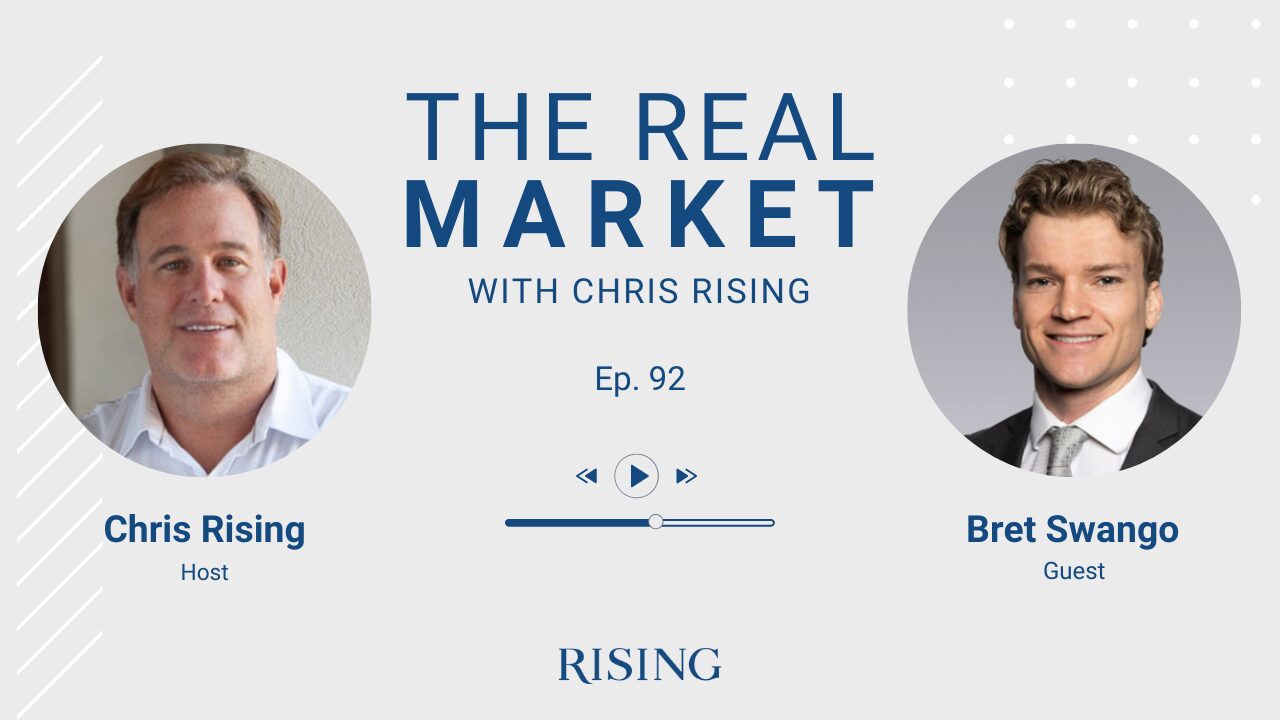
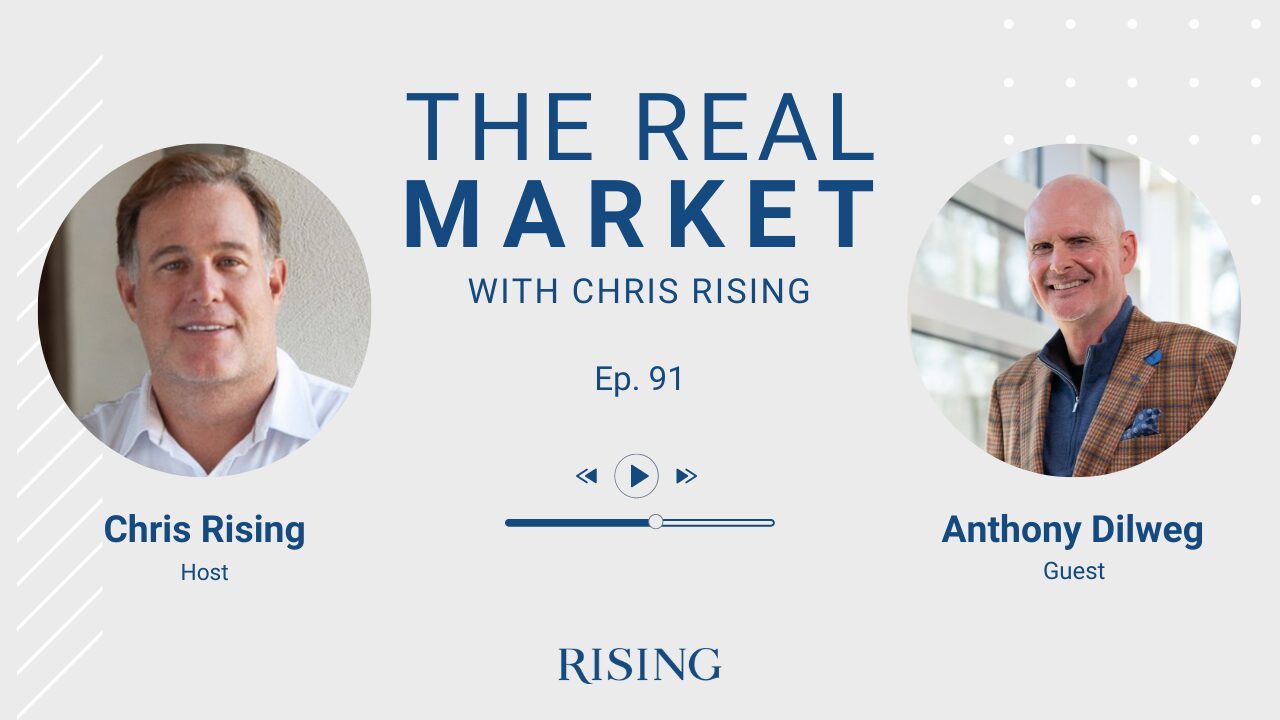
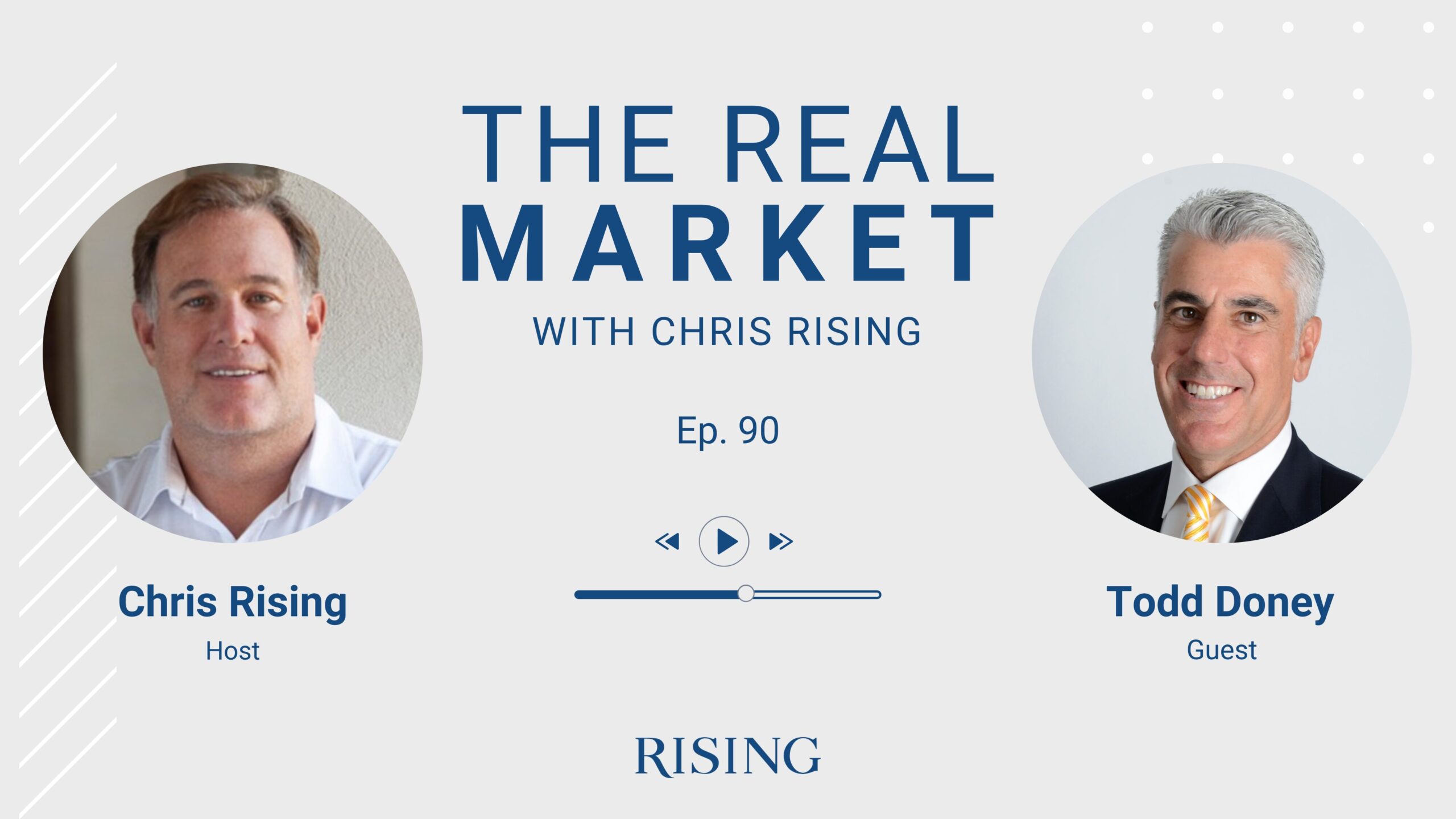
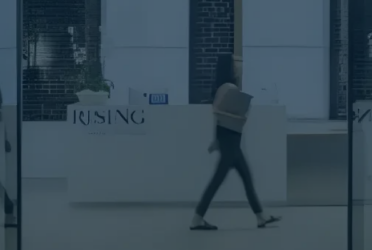
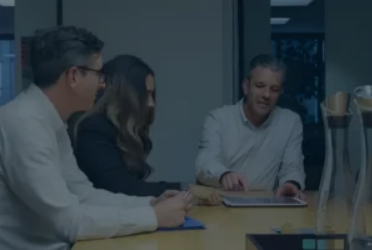
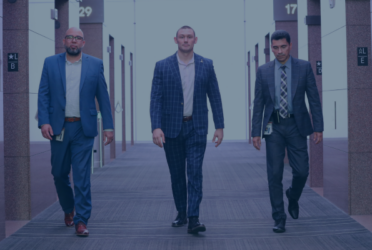
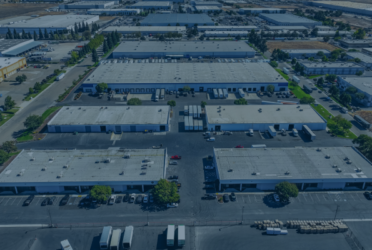
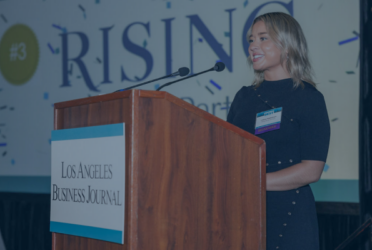
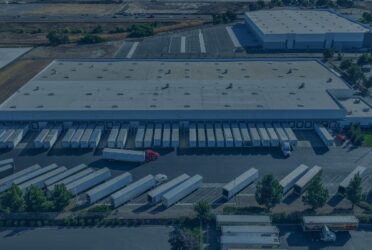
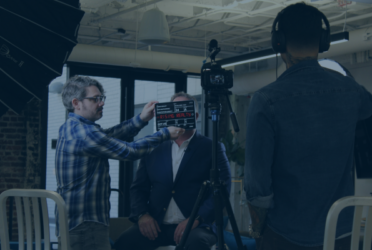
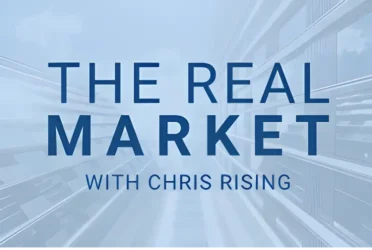 Podcast
Podcast